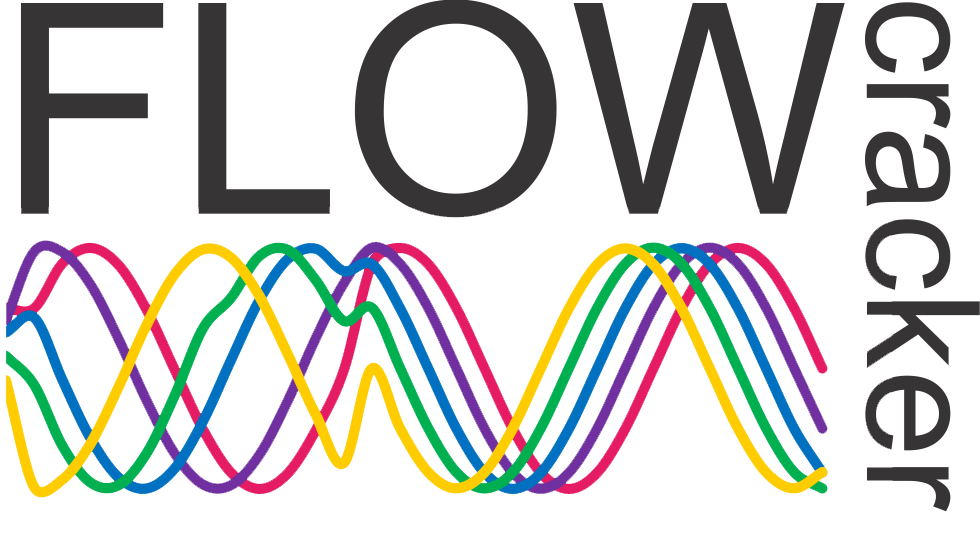
Seeing “Product”, “System”, and “Flow“

Seeing “Product”, “System”, and “Flow“
Most enterprise transformations stall not because of a lack of ambition, but because of a lack of shared understanding. Leaders see parts of the picture — delivery teams focus on sprints, architecture teams on systems, finance on costs — but the whole remains fuzzy.
At Flow Cracker, we use a simple yet powerful principle: you can’t transform what you can’t see clearly. That’s why we offer three lenses: Product, System, and Flow. These perspectives allow transformation leaders to observe, diagnose, and act with precision.
The Need for Multiple Lenses
Most transformation programs latch onto one lever. Some start with product thinking — shifting from projects to products. Others focus on restructuring — reorganizing teams into squads and tribes. Some get obsessed with value streams and Kanban boards.
But complexity resists one-dimensional solutions. What looks like a product problem is often a structural one. What feels like a flow issue may be rooted in misaligned product definitions. You fix one issue only to see another pop up — like squeezing a balloon.
That’s why we need multiple lenses. Each lens reveals a different truth:
- Product clarifies what outcomes we’re aiming for
- System shows how the organization is (or isn’t) designed to support it
- Flow reveals where value gets stuck or leaks out
Used together, they offer a diagnostic and design toolkit. Instead of guessing, we begin seeing.
Lens 1: Product – Seeing What We Deliver
Ask five teams what their product is — and you might get five different answers.
The Product lens challenges this ambiguity. It sharpens our understanding of value by anchoring conversations around customers, outcomes, and ownership. It helps us shift from delivering features to solving real problems — and from tracking effort to enabling impact.
When this clarity emerges, teams stop guessing. They build with purpose. Strategy and backlogs align. Outcomes start to matter.
Real-World Glimpse: Home Improvement Retailer
Despite structural improvements, delivery promises weren’t met. The Flow lens uncovered hidden queues in inventory and delays in partner coordination. By mapping and instrumenting the flow, they reduced delivery time and increased predictability — without changing any headcount or tools.
Lens 2: System – Seeing How We’re Structured
Even the best product intentions can falter if the organization isn’t designed to support them.
The System lens helps us see the invisible forces that shape how work actually happens — from team topologies and reporting lines to governance models and decision rights. Many Agile teams struggle not because they lack capability, but because the system around them isn’t enabling flow.
This lens invites us to ask: Are we structured for alignment — or for friction?
Real-World Glimpse: Home Improvement Retailer
After identifying key product experiences, the client saw their structure was still siloed. By creating an “Order to Delivery” squad with members from logistics, tech, and customer care — and shared goals — they improved both coordination and speed of delivery.
Lens 3: Flow – Seeing How Value Moves
You can have clarity on what to build and be structured to build it — but if value gets stuck in queues, rework, or decision loops, your transformation won’t flow.
Flow is where the truth shows up. It’s not what we say we do — it’s what actually gets delivered, when, and how.
The Flow lens helps teams tune into the system’s rhythm, reveal invisible delays, shorten feedback cycles, and build momentum we can trust.
Real-World Glimpse: Home Improvement Retailer
Despite structural improvements, delivery promises weren’t met. The Flow lens uncovered hidden queues in inventory and delays in partner coordination. By mapping and instrumenting the flow, they reduced delivery time and increased predictability — without changing any headcount or tools.
Putting the Lenses Together
The real magic of these lenses is in using them together — in diagnosis, design, and continuous reflection.
|
Step |
Product |
System |
Iteration |
|
Diagnose |
What are we delivering and to whom? |
Are teams and roles aligned to that product? |
Where is value getting stuck? |
|
Design |
Can we reframe around outcomes? |
How do we remove structural friction? |
How do we enable fast, reliable delivery? |
|
Iterate |
Are we measuring meaningful outcomes? |
Are we evolving our org design? |
Are feedback loops closing fast enough? |
Best Practices and Common Pitfalls
Best Practices
- Define product boundaries clearly, with user-centric outcomes
- Align org structures with product accountability
- Visualize flow across all stages — from idea to adoption
- Use the lenses as shared transformation language
- Facilitate multi-lens reflections regularly
What Good Looks Like
- Optimizing for activity over impact
- Changing roles without changing power
- Over-reliance on metrics without context
- Isolating each lens instead of integrating them
- Ignoring leadership behaviors and cultural inertia
Conclusion: See Clearly, Act Wisely
Transformation isn’t about just adopting a new framework — it’s also about developing new ways of seeing.
- The Product lens asks: Are we solving real problems for real people?
- The System lens asks: Are we structured to do that sustainably?
- The Flow lens asks: Can we deliver continuously and learn quickly?
These lenses are not tools for perfection — they’re tools for clarity. They shift us from scattered change to strategic alignment.
So, if your transformation feels stuck, don’t reach for another playbook.
Reach for the lenses. See clearly. Then act wisely.
